Write Us
We are just a call away
[ LET’S TALK AI ]
X
Discover AI-
Powered Solutions
Get ready to explore cutting-edge AI technologies that can transform your workflow!

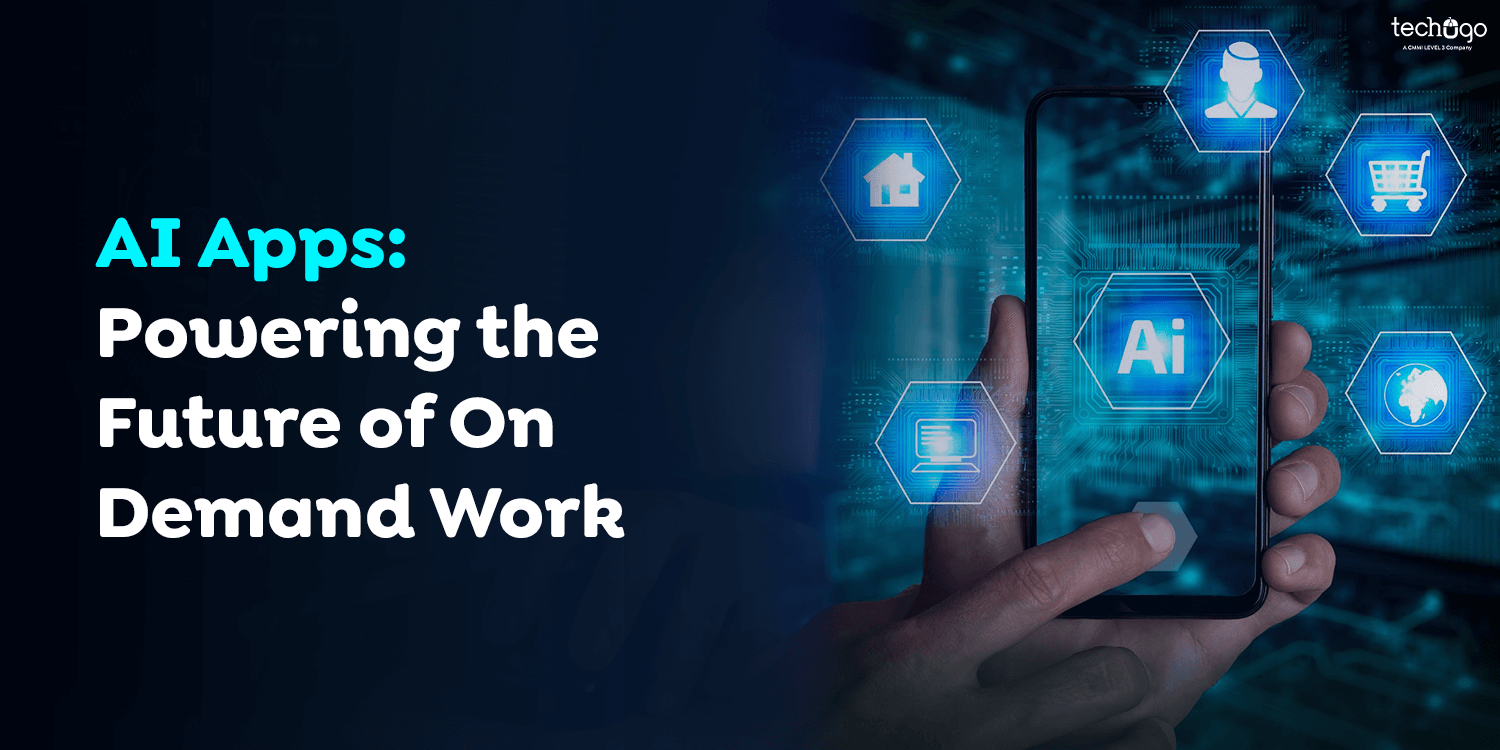
The capabilities and strength of the potential Artificial Intelligence (AI) cannot be understated. AI has revolutionized how we use technology by introducing us to machines that can complete tasks precisely, leading us into an age where autonomous vehicles have become a reality. This is only the start. AI isn’t just an instrument for solving mathematical problems but a revolutionary factor that can shape our future economy and society.
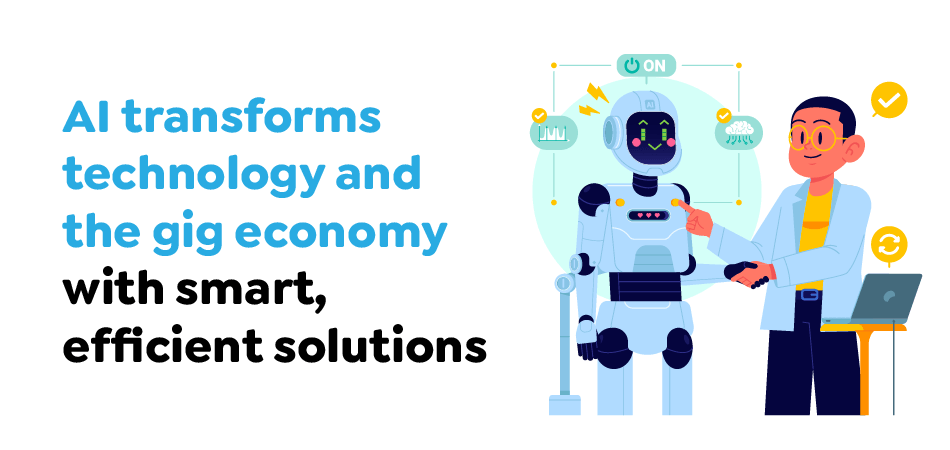
Artificial Intelligence App Development is now increasingly prevalent in our lives. AI is ingrained into the fabric of nearly everywhere, from robots that can perform tasks precisely to autonomous vehicles with the potential to change our travel habits, huge manufacturing factories, and our small smartwatch displays. Nowadays, businesses of any size have turned towards AI to improve customer experience and sales. AI could be the next huge trend. It is now becoming a part of the operations of Fortune 500 companies to help businesses automate their operations.
Many companies rely on AI to offer personalized service to their clients, and this pattern is expected to persist when customer support gains importance. Are you aware that apps incorporating AI innovations are changing how we work? AI is a new regular in the gig economy. In this article, you’ll learn the impact of AI-powered apps on the gig economy and the companies that depend upon their use.
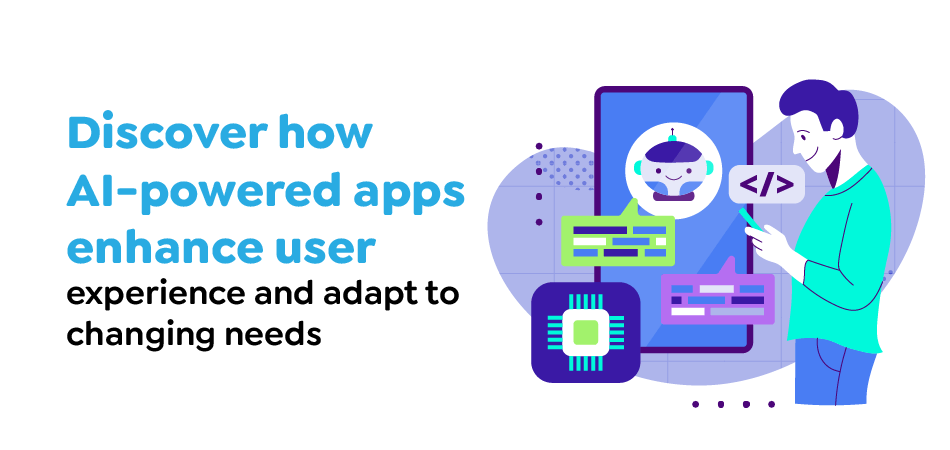
There are a variety of AI-powered applications as this cutting-edge technology is being integrated into online and mobile apps to provide advanced functions. The programs can learn through data, adapt to changes in user behavior, and make intelligent decisions. Incorporating AI (AI) in applications results in more sophisticated and reliable systems that improve user experience and adapt to changing needs. AI’s role is groundbreaking, be it the human-centered fitness app monitoring everyday activities or an app for learning languages that customizes courses according to individual user development.
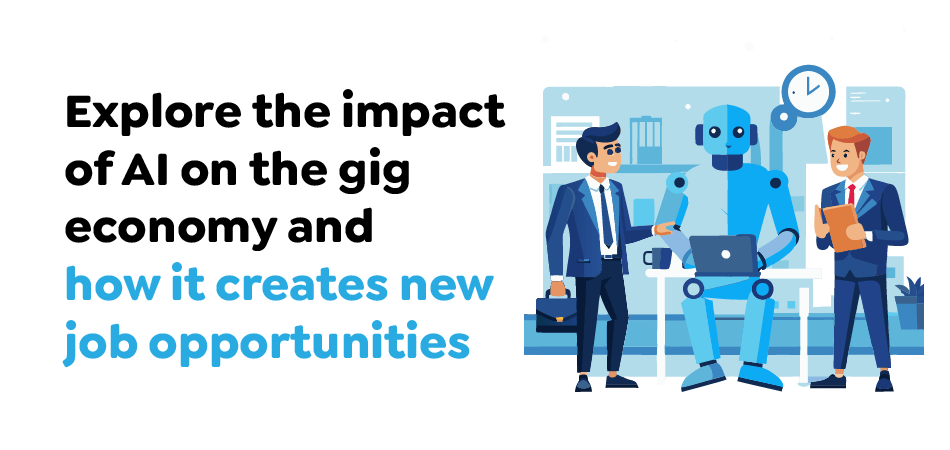
There’s an increasing resentment toward the reality that AI is here to stay, and it’s not without reason that the rapid rise of AI solutions to everything can be a shock. The answer is discovered only through a shift of viewpoint. Although AI and robot machines are certainly replacing the workforce that works in the gig economy, it’s also the case that most freelance platforms that connect starkers to employers have AI capabilities or are heading in this direction. That means AI may be creating more significant jobs than it’s doing.
The gig economy could provide businesses and companies with cost-effective ways to complete tasks. However, finding the right person must be solved. AI-powered platforms have started using data to assist employees and employers in discovering precisely what they require. Marketers and researchers in the gig economy employ such information to supply ethical solutions to businesses that exploit gig workers and apps with the information needed to succeed.
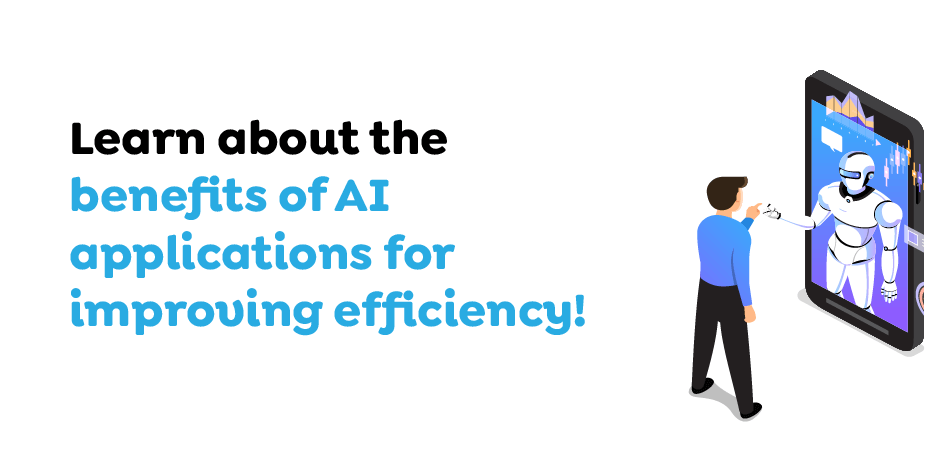
AI-powered software is an investment but is a quick payoff. Based on constant contact, most firms that have embraced AI and automation have seen significant cost savings and productivity improvements. As they continue to use this technology, they have more advantages.
AI software can take care of routine and tedious tasks, including schedules, data entry, and customer service queries, freeing up human workers for more challenging and strategic tasks. AI algorithms can also examine data and recommend changes to enhance the supply chain, logistics, and energy usage, reducing costs while increasing the efficiency of operations.
AI allows personalized recommendations and user-friendly content according to users’ behavior preferences, interests, and prior interactions. Chatbots and virtual assistants that AI powers offer 24/7 customer support, providing quick answers to queries and resolving difficulties. This improves the customer experience overall and increases users’ satisfaction and engagement.
AI analyses customer data patterns to forecast buying behavior patterns and trends for the coming year, helping companies adapt their marketing strategies and product design to boost sales. Furthermore, through understanding the customer’s behavior and preferences, AI will identify potential ways to cross-sell and up-sell and increase the overall worth of sales.
AI can analyze market data and trends in consumer behavior more effectively than traditional techniques, providing companies with valuable data that could help guide crucial decisions. AI can also support innovation by developing ideas and recommending improvements to products or services.
AI algorithms can continuously examine and analyze data from various sources to spot fraudulent activity, potential security breaches, and cyber-attacks, significantly increasing security measures. In production and manufacturing, AI systems can inspect and spot quality or defect issues more precisely and consistently than human inspectors, ensuring better quality items.
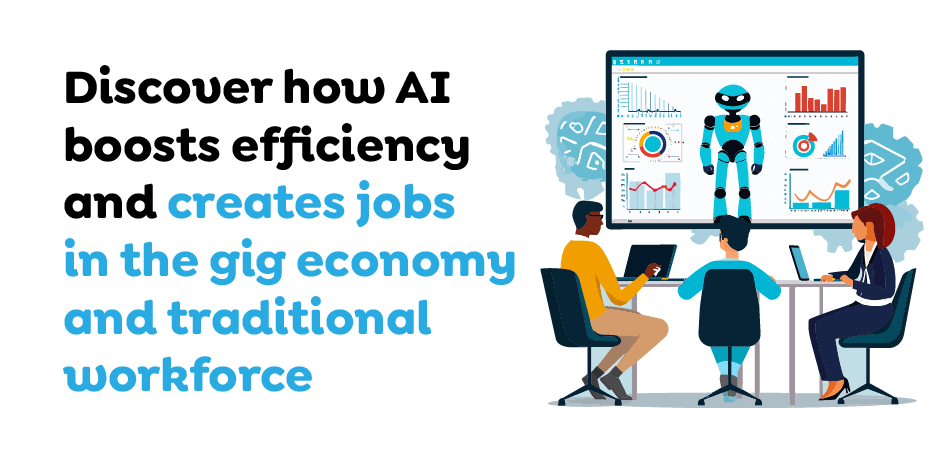
Now, the issue is whether the new paradigm of employment results in a decline in conventional 8-hour work. Naturally, it will alter the work schedule of traditional workers.
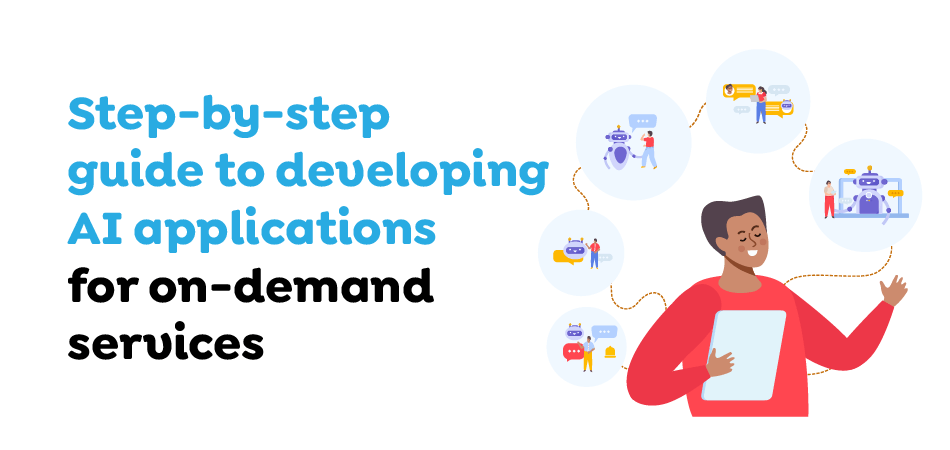
This step-by-step guide will show you how to build and utilize an AI application. Whether you’re a researcher, a business owner, or interested in AI technological advancements, these guidelines will guide you through developing an AI application that could revolutionize your business.
Begin by identifying the problem that needs to be addressed before constructing an AI application. Think about the processes and functions that the app will perform. Then, consider how you intend to utilize and implement the AI technologies. What are the outcomes you can anticipate from the stack? Which benefits will you get? After you’ve established the issue and idea, it’s time to make product specifications. After analyzing the requirements, the On Demand App Development Company can comprehend why they are creating products and discover techniques and tools to help the process.
To ensure the successful operation of the success of your AI application, you must establish specific goals. The key ingredient to the success of an AI application is the clarity of its objectives at the very beginning. Start by identifying the exact issue your application aims to resolve for its customers.
Before you begin the development process, consider the resources available. AI models are resource-intensive and require extensive learning and maintenance infrastructure. Make sure your infrastructure is strong enough to handle the load.
Also Read : Key Features Of A Successful On Demand Food Delivery App Development
Data collection and preparation is the basis of AI application development. Even the success of most advanced AI models depends on the high quality of the information they’re trained on. Prioritizing data quality over quantity is crucial to prevent the massive cost of poor-quality data. The study revealed that companies anticipate losses of up to $15 million annually because of inadequate data quality.
To minimize the loss, ensuring that your information is well-organized and adequately cleaned is vital. The first process is choosing the best datasets to train the AI models. For people working with neural language processing models, Common Crawl offers a reliable, free database of data from web crawls and was the basis to make up 82% of the raw tokens used in the GPT-3 model. Be aware that effective data collection and preparation are not only initial steps but essential in developing a solid AI application. The key is making it happen and getting it done right.
Also Read : Chatgpt In Healthcare Industry Improving Efficiency Revitalizing Outcomes
The effectiveness of the success of your AI application is dependent on choosing the right tools and frameworks to build and train your AI models. The choice you make should be in line with the specific requirements of your business and seamlessly integrate with the existing system. Selecting the appropriate software speeds up development and improves the efficiency of the AI models.
Top cloud-based service providers provide them. That likely means you’re already using one or more of them. Familiarity with these platforms can significantly facilitate the integration and implementation of your AI models. The success of your AI application’s effectiveness is contingent upon this selection, which underscores the significance of strategically selecting the right AI development framework and tools.
The design stage begins by delineating the form of the model based on the challenge it’s trying to resolve. The steps to follow:
Fine-tuning refers to a procedure where the previously trained model is refined (or “fine-tuned”) on an entirely new, usually smaller data set customized to a particular job or area. The method uses the model’s universal capabilities, which it learned from large-scale data. Then, it adapts it to the specifics of a project.
Fine-tuning improves the model’s performance when performing specific tasks. It can dramatically improve its accuracy and adaptability to the application’s requirements. Using these techniques, programmers can develop better, flexible, and effective Generative AI models designed to meet their application’s requirements.
Incorporating the AI model into your application is a crucial step during development. It’s the key to the performance of the AI application. Determining whether your AI abilities will increase user satisfaction or fail to meet expectations is crucial.
Also Read : IOT Brewing Innovations in The Food Beverage Industry
The first step is choosing whether to incorporate the AI model in the app’s front or back end. AI models are generally integrated into the front end of apps to communicate directly with users. For instance, specific speech recognition models could be better when integrated with the back end to improve efficiency and accuracy.
Consider the next step: in which location will the AI model process the information? In the cloud or directly on your device? Processing on-device, or edge AI, is especially beneficial for artificial intelligence-powered Internet of Things (IoT) applications. It offers speed as well as enhanced security. Cloud-based processing is typically better suited to most applications because of its capacity and performance.
Incorporating an AI model does not have to be a lengthy procedure. You don’t have to begin from scratch when AI APIs already exist to fulfil your requirements. The main thing to remember is that developing an app is not only integrating technology but also ensuring that the application’s AI technology can significantly enhance your users’ experience with the app.
The process of developing the AI app isn’t instant; it’s the start of a continual improvement and refinement process. It is essential to consider each AI model as an ongoing working model, which requires continuous testing and iteration to ensure growth and improvements.
AI models could be better when they first come out. They have to learn from their mistakes and evolve as time passes. In addition, regular retraining of models using up-to-date data is vital to stop ‘ model drift,’ which is a frequent issue in which the performance of a model decreases because of changes to the underlying data patterns. The continuous update keeps the model up-to-date and accurate throughout its lifespan.
Integrating feedback loops is crucial. This allows you to continuously collect and incorporate user feedback, allowing for iterative improvement that aligns with the user’s demands and boosts application performance. When you adopt this rigorous testing system and keep the possibility of a continuous channel for user comments, you will ensure that your AI application is practical and valuable in the future.
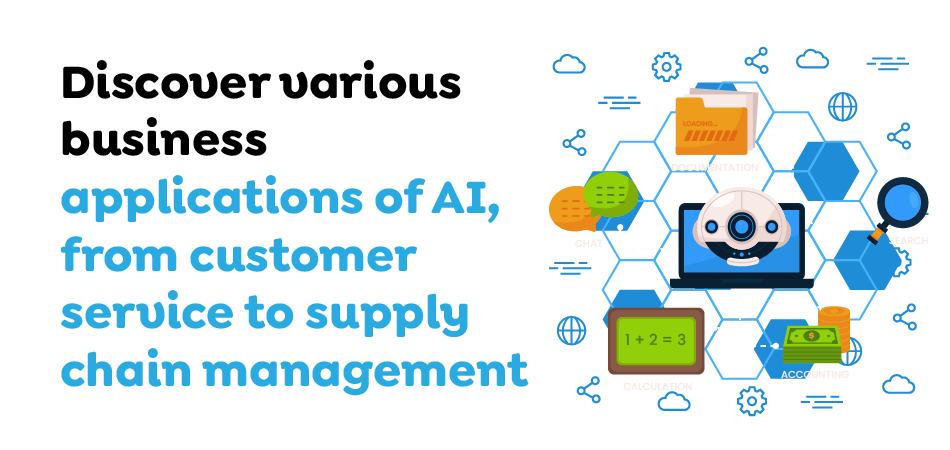
AI is a new technology with benefits that remain to be realized. AI technology is only one of the many factors disrupting markets and opening up new possibilities for digital-based businesses. AI can also be utilized in various fields, functions, and organizations. Here are some examples of business uses of AI:
AI powers a variety of apps that require human interaction, including chatbots in customer service. These applications depend upon machine learning (ML) to understand and react efficiently to human input.
VR and virtual agents have revolutionized IT service management by automating ticket routing and drawing details from knowledge databases. Also, providing solutions for routine problems and improving the efficiency of IT-related operations.
AI applications within supply chain management include forecasted maintenance, risk management, and improved procurement processes. AI’s ability to quickly analyze information aids in making decisions faster, which is essential to managing supply chain logistics and effectiveness.
By utilizing facial recognition, voice recognition, or neural networks, deep learning improves security and individualization. It’s used extensively to personalize information for the user by analyzing massive amounts of data to identify patterns.
AI helps marketers through real-time personalization, optimizing media strategies and content, and orchestrating campaigns. Also leveraging customer insights to help accelerate the deployment of products at a large scale.
Virtual Customer Assistants (VCAs) help improve the customer experience using AR technology by providing features such as voice recognition, sentiment analysis, and automatic quality control. It provides 24/7 customer support without humans being involved.
Also Read : The Impect of Augmented Reality AR in Marketing Boosting Consumer Engagment
HR AI improves hiring by matching the job description to candidate qualifications through NLP. It also helps with job descriptions that require (NLP), enhances skills development by utilizing recommendation engines, and assists in planning career paths using adaptive learning platforms.
AI helps simplify financial tasks, including audits of expense reports, the processing of invoices from vendors. Conformity with accounting standards, drastically cutting the manual burden and increasing precision.
From classifying spend and contracts to more advanced software like risk management and automated sourcing, AI is enhancing the efficiency and accuracy of vendor management by using machine learning and advanced analytics.
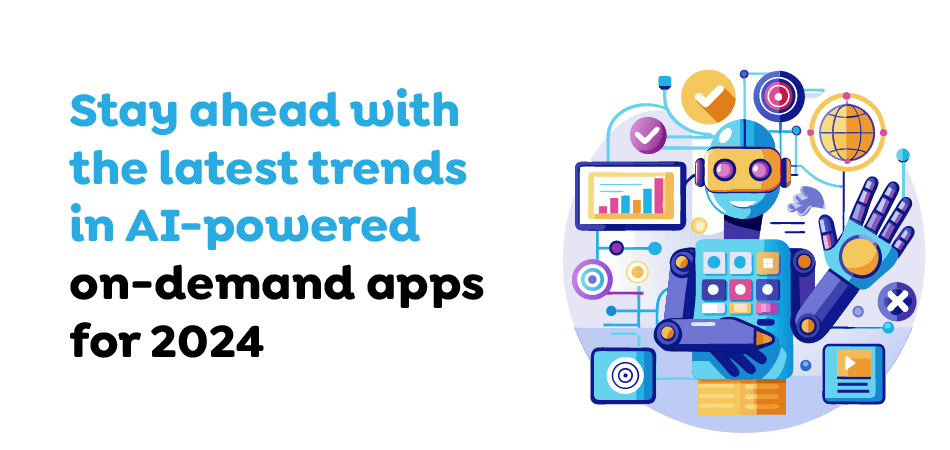
The world of AI application development is swiftly developing and fueled by technological advances, the growth of computational power, and the growing availability of data. When we consider the future, various trends will shape the future of AI applications. They will make the apps more effective, smarter, and a part of our daily routine. These are the top developments to watch regarding AI app development.
Today, consumers need more time to decide on their own to determine the best product or what restaurant to go to. This is why advances in the personalization field and consumer profiles using AI and ML have become a reality to boost marketing effectiveness by meeting each customer’s needs precisely at the right moment.
Data collected, such as customer personas, purchase histories, and other information, are continually gathered to establish persistent identities that help the on-demand industry provide perfectly timed coupons and customized ideas for customers. Additionally, the behavior patterns about events, timings at work, and evening activities aid ride-sharing applications in determining where drivers are needed and what time of the day is the most bustling.
Also Read : Unpacking The Latest Ai Trends in Fintech Market Shaping The Digital Economy
AI-integrated apps use user behavior data to help improve future sessions. For example, consider an app for booking hotels that utilize both bot and human interactions in their booking process. It primarily relies upon natural language processing and machine learning technology to mimic human conversations while catering to users’ preferences. Human agents will intervene if an AI-powered bot cannot comprehend or respond to a question accurately, requiring them to be able to handle situations like this while removing any chance of errors.
If you’re new to this topic, let us show you the way! Artificial Intelligence also features conversational capabilities. This means that you can communicate with it in human words. Although speech recognition technology existed, the conversational user interface facilitated more personal conversations between computers and humans. Financial applications can use the technology via text messages, voicemails, or other forms of communication with customers or through recommendations for financial services provided through AI experts.
By using predictive intelligence, customers stay informed of special promotions, sales, and every other purchase through an AI algorithm that analyzes the previous purchase history of clients as pre-programmed pattern recognition. Additionally, it entices consumers to spend more money while generating additional revenue for businesses.
Each business is aware of the value of high-value customers to the overall success of their business. But, most companies aren’t aware of what they can do to find their top-value customers. Don’t worry! With the aid of AI and ML technology, online service providers gain a comprehensive view of their potential customers and what opportunities are in store for them in the future market.
Also Read : Unleasing The Power of AI Transforming Software Development With Machine Learning
Artificial Intelligence has a remarkable influence on App security and user authentication. While hackers can take advantage of the latest technology, on-demand applications must stay at the forefront of technology to avoid security threats and access possible security breaches before they occur. Additionally, AI assists on-demand apps by identifying the emergence of anomalies and irregularities along with them, such as abnormal patterns in user behavior or the presence of viruses.
Additional advanced technologies, such as blockchain and machine learning, could minimize perceived weaknesses. Also provides users with an unparalleled user experience by enabling a secure and simple authentication process.
Relevant content is essential for your success. The recommendations keep users interested and engaged with the application. Another way AI could help is through “On-Demand Apps”. Today, online platforms offer “customers who purchased this also purchased” and suggestions for products to increase retention and conversion.
On-demand applications will provide users with some interesting ideas through the data they collect on them to create the learning algorithm. It will help predict the purchase of future products by increasing the likelihood of a purchase.
Artificial Intelligence is an excellent tool for embedding AI-driven translation capabilities into available apps on demand. While there are many translation applications (but they don’t all work offline), AI translation is handy here. Imagine your phone can translate multiple languages in minutes without an internet connection. Amazing, right?
The on-demand apps leverage Artificial Intelligence and machine learning to translate dialects spoken in different regions into a comprehensible dialect. A range of time-of-flight settings allows users to toggle between translation and spoken words. A mobile translator powered by AI facilitates worldwide communications.
This is not a surprise, especially for the food-on-demand sector. Service providers are aware that the ability to deliver food items or drop them off on time at the destination can lead to increased business, happy clients, and more profit. Indeed, delivery time is frequently mentioned as one of the leading customer satisfaction factors, with a waiting period of about 30 minutes.
Also Read : Developing an On Demand Food Delivery App Like Deliveroo
Addresses, street layouts, conditions for traffic, and weather forecasts are analyzed simultaneously using AI and machine learning software. While providing drivers with an accurate status of their routes and any roadblocks.
Artificial Intelligence’s most significant potential is analyzing human emotions through information interpretation and advanced imaging processing. AI can detect human emotion by mixing subtle signals from speech, like vocal intonation and facial recognition, to provide an accurate and accurate analysis of emotion. Additionally, companies such as Spotify use technology for emotion detection. Its apps provide music playlists based on the individual’s moods instead of playing any song randomly.
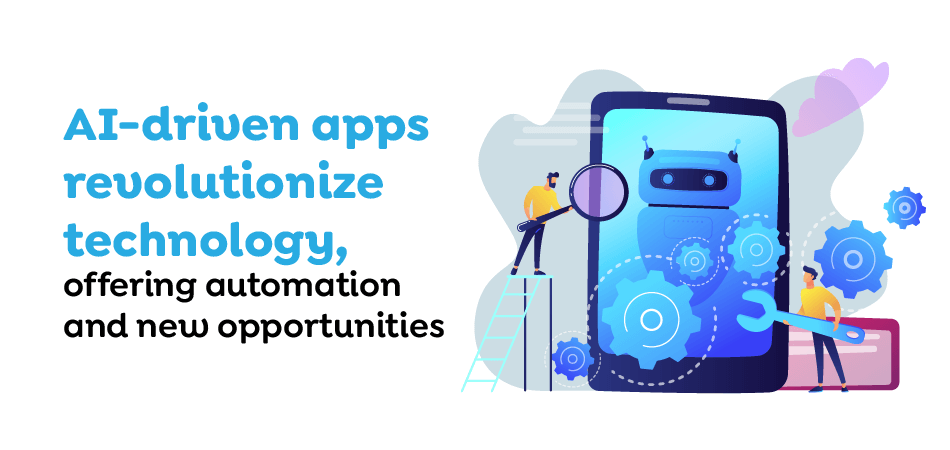
AI-driven apps are revolutionizing the way people interact with technology. They improve user experiences and provide valuable data to companies by putting information and automated processes at users’ fingertips. The future of AI for on-demand applications is expected to be fueled by automation, growth in the use of mobile devices, and technological advances. Although automation is predicted to replace traditional work in the coming years, the market for on-demand services has grown rapidly due to the potential for more freedom and ease of use.
Additionally, remote work is increasingly popular due to technological advances that allow cooperation and collaboration anywhere in the world. If you’re planning to join the bandwagon, it is crucial to utilize AI for on-demand applications and a model of work. Developing AI for the next app will ensure you stand out from your peers.
Get in touch with Techugo to develop smart, efficient, and user-friendly apps tailored to your needs.
Write Us
sales@techugo.comOr fill this form